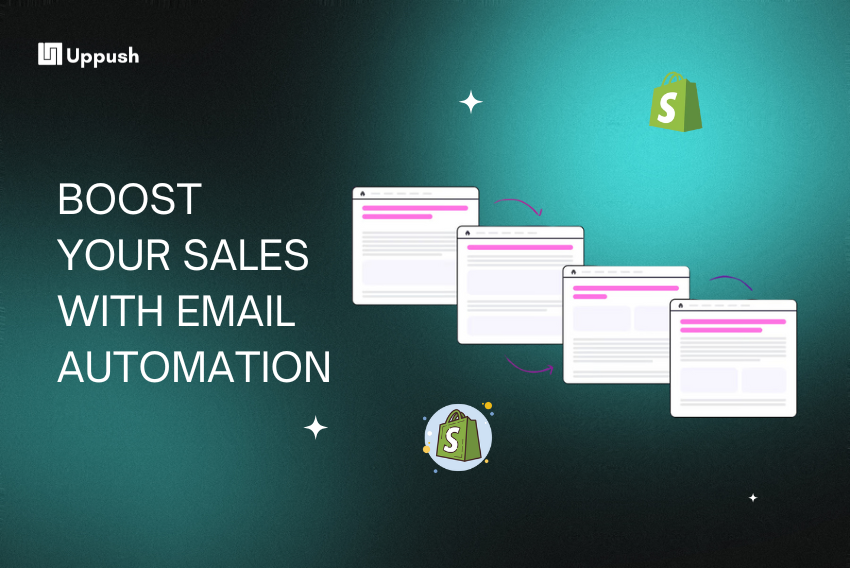Shopify Abandoned Cart Recovery: Boost Your Sales with Proven Strategies

Abandoned cart recovery has become an essential focus for Shopify merchants striving to maximize their sales potential and improve customer retention. Every cart left behind represents a missed opportunity to convert interest into revenue, making it critical for businesses to implement effective strategies to re-engage customers. With the right approach, abandoned carts can be transformed into completed sales, significantly impacting overall revenue.
This guide provides a deep dive into actionable solutions, showcasing how automated email campaigns can be leveraged to recover lost sales and build lasting relationships with your customers. By understanding the importance of timely follow-ups and personalized messaging, you can create campaigns that not only recover revenue but also enhance the shopping experience for your audience.
Understanding Cart Abandonment: A Critical E-commerce Challenge
Cart abandonment occurs when potential customers add products to their shopping cart but leave without completing the purchase. With average cart abandonment rates hovering around 70%, this phenomenon represents a significant challenge for online retailers.
Why Customers Abandon Their Carts
- High shipping cost: Unexpected or high shipping costs that weren’t clearly communicated during the shopping process
- Long checkout process: Complex or lengthy checkout process requiring too many steps or unnecessary information
- Technical issues: Website technical issues including slow loading times, errors, or crashes during checkout
- Price comparison shopping behavior where customers research better deals on other sites
- Payment security concerns and hesitation about sharing sensitive financial information
Implementing Effective Cart Recovery Solutions
A well-structured cart recovery strategy combines automated email sequences with personalized messaging to re-engage potential customers effectively.
Email Automation Best Practices
- Send the first recovery email within 1-2 hours of cart abandonment to capture customer attention while their shopping intent is still fresh and the products are top of mind
- Follow up with a second, strategically timed email after 24 hours that reinforces the value proposition and potentially includes a special offer to incentivize completion of the purchase
- Consider sending a final reminder during the crucial 48-72 hour window, when data shows customers are making their final purchase decisions, to create a sense of urgency and encourage cart completion
Key Elements of Successful Recovery Emails
- Attention-grabbing subject lines that create a strong sense of urgency and motivate immediate action
- High-quality product images with detailed descriptions that showcase key features and benefits while maintaining visual appeal
- Thoughtfully personalized content that leverages individual browsing history and shopping preferences to create a tailored experience
- Strategically placed call-to-action buttons with compelling copy that guides customers toward purchase completion
- Mobile-responsive design that ensures seamless viewing and interaction across all devices and screen sizes
Advanced Optimization Techniques
To maximize recovery rates, merchants should focus on data-driven optimization and continuous testing.
Segmentation Strategies
- Cart value-based targeting that segments customers based on their abandoned cart totals, allowing for tailored incentives and messaging strategies for different spending thresholds
- Customer purchase history analysis that considers past buying patterns, frequency of purchases, and lifetime value to create more relevant recovery campaigns
- Geographic location segmentation that accounts for regional preferences, local shopping behaviors, and timezone-specific timing for optimal engagement
- Device type categorization that enables responsive design optimization and platform-specific messaging for desktop, mobile, and tablet users
Performance Metrics to Track and Analyze
- Recovery rate percentage – measures the proportion of abandoned carts successfully converted back into completed purchases through recovery efforts
- Email open rates – indicates the effectiveness of subject lines and sending times in capturing customer attention
- Click-through rates – demonstrates how compelling your email content and call-to-action buttons are at driving customer engagement
- Conversion value – tracks the actual revenue generated from recovered carts and helps calculate the ROI of your recovery campaigns
- Average order value of recovered carts – compares the purchase amounts of recovered orders versus standard purchases
- Time to conversion – measures how long it takes from sending recovery emails to completing recovered purchases
Expert Tip: Implement A/B testing for subject lines, email content, and sending times to optimize your recovery campaign performance continuously.
Technical Implementation Guide
Implementing a robust cart recovery system demands meticulous attention to technical details and seamless integration with your existing Shopify infrastructure. This process requires careful planning and execution to ensure optimal performance and reliability.
Essential Setup Steps
- Research and select a highly-rated cart recovery application from the Shopify App Store, considering factors such as reliability, feature set, user reviews, and compatibility with your store’s requirements
- Establish and fine-tune email trigger mechanisms and automation workflows, including customizing timing intervals, setting up conditional logic, and defining customer segments for targeted messaging
- Implement comprehensive tracking systems and analytics tools to monitor campaign performance, customer behavior patterns, and conversion metrics across different touchpoints
- Conduct thorough system testing before deployment, including email delivery verification, automation sequence validation, and cross-device compatibility checks to ensure flawless execution
Measuring Success and Return on Investment (ROI): Understanding Your Cart Recovery Performance
To effectively evaluate the impact and success of your cart recovery initiatives, it’s essential to monitor and analyze these critical key performance indicators (KPIs). These metrics will provide valuable insights into the effectiveness of your recovery strategy and help identify areas for optimization:
| Metric | Target Range |
|---|---|
| Recovery Rate | 10-15% |
| Email Open Rate | 40-50% |
| Click-through Rate | 20-30% |
| Conversion Rate | 5-10% |
Future Trends in Cart Recovery: Innovations Reshaping E-commerce
As technology continues to evolve, stay ahead of the competition by embracing these transformative trends in cart recovery that are revolutionizing how businesses reconnect with potential customers:
- AI-powered personalization that analyzes shopping behavior patterns to deliver highly targeted recovery messages and product recommendations tailored to individual customer preferences
- Multi-channel recovery approaches incorporating email, social media, and retargeting ads to create a cohesive and comprehensive strategy for reaching abandoned cart customers across various platforms
- SMS integration leveraging the immediate nature and high open rates of text messages to send timely cart recovery reminders and exclusive offers directly to customers’ mobile devices
- Progressive web app notifications that enable real-time engagement with customers through browser-based alerts, providing a seamless recovery experience without requiring additional app installations
Remember: The key to successful cart recovery lies in finding the right balance between persistence and personalization while maintaining a customer-centric approach.
By implementing these strategies and continuously optimizing your approach, you can significantly reduce cart abandonment rates and boost your Shopify store’s revenue. Remember to regularly review and update your recovery tactics based on performance data and customer feedback.


